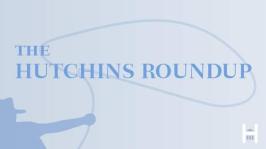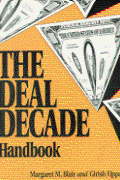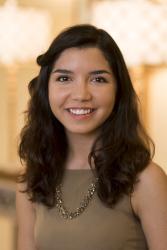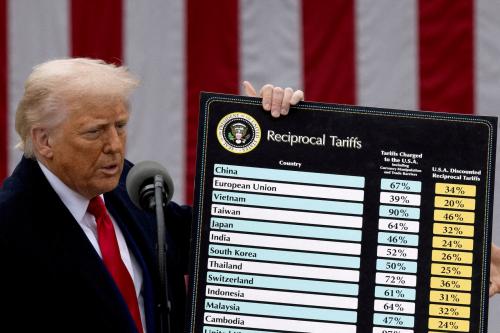Studies in this week’s Hutchins Roundup find homeownership can inhibit earnings recovery following job loss, hundreds of billions of dollars of nonfinancial corporate debt are at risk of default, and more.
Want to receive the Hutchins Roundup as an email? Sign up here to get it in your inbox every Thursday.
Homeowners experience slower earnings recovery after job loss than renters
Homeowners who lose their jobs take up to two years longer than renters to find jobs that pay as much as their lost ones, find Eva de Francisco of the Bureau of Economic Analysis, Joaquin Garcia-Cabo of the Federal Reserve Board, and Tyler Powell of the Brookings Institution. Owning a house limits the flexibility of individuals to look for work in other locations, the authors argue, whether because of the transaction costs of selling a house or simply greater attachment to the local community and schools. Homeowners also may rely on the house as a financial backstop and are more picky in their job search, but lose human capital the longer they remain unemployed. Using data on employment, earnings and homeownership history from before and after the Great Recession, the authors show that the difference between renter and homeowner earnings was even more persistent after the housing market crash of 2007 to 2009—suggesting that falling house prices made moving to find work more difficult for homeowners and may have contributed to a slower labor market recovery.
Stress testing leveraged nonfinancial corporates reveals potential for billions in debt default
Unlike the banking sector, the nonfinancial corporate sector was not subject to increased regulation and stress testing in the U.S. following the Global Financial Crisis. Between 2010 and 2020, the volume of leveraged loans (loans made to companies below investment grade, with high leverage ratios, and/or at high spreads) doubled while lending standards loosened and corporations’ creditworthiness declined, according to Carlos Caceres of the International Monetary Fund (IMF) and co-authors. Using data on 755 U.S. companies borrowing in the bond market, leveraged loan market, or both, the authors’ stress tests find that between 5% and 11% of the firms could fall into negative equity, risking default on $400 billion to $675 billion in debt. The range of losses reflects two scenarios: the IMF’s June 2020 forecast and an alternative more severe downturn. Since banks hold a relatively small portion of leveraged nonfinancial corporate debt, the authors note that these losses would not necessarily pose substantial risk to financial stability; however, they caution that such a substantial default could still exacerbate macroeconomic stress by forcing distressed firms to reduce investment and cut labor costs, reducing employment and aggregate demand.
The Fed successfully mitigated rising Baa-Treasury spreads
As a result of the COVID crisis, the Federal Reserve, among other things, launched two emergency-lending facilities for corporate bonds, the Primary and Secondary Market Corporate Credit Facilities. Michael D. Bordo of Rutgers and John V. Duca of Oberlin say that these initiatives successfully halted the widening spread between yields on U.S. Treasuries and Baa-rated corporate bonds. This prevented between 0.6% and 2.25% of real GDP losses that they estimate would have occurred had spreads been allowed to widen. The authors say that the Fed’s intervention, which directly supported the nonfinancial sector for the first time, successfully arrested a credit crunch. They note, however, that it remains an open question whether the Fed’s traditional policies might have achieved a similar effect. In addition, they caution that the nonfinancial sector could come to depend on Fed support during future economic downturns.
Chart of the week: Percent Change in State and Local Employment from January 2020

Quote of the week:
“Sometimes in this job I do have to remind myself that probability distributions have both right and left tails. It seems at the central bank, they are always focused on the left tail. There is some good news. The momentum that the economy had going into the fourth quarter was very solid. My own personal forecast and projection for ’21 always had a baseline that there would be a vaccine but that was not a table pounding conviction. And I am not an epidemiologist and don’t play one on TV. But, obviously, the news has been very good…now two successful trials with above 90% efficacy…” says Richard Clarida, Vice Chair of the Federal Reserve Board of Governors.
“I would also point out that there is an enormous quantity of pent-up saving. Fiscal policy was so successful that this is the only downturn in my professional career in which disposable income actually went up in a deep recession. And a lot of that has been saved, a lot of that has been forcibly saved, because people haven’t been able to go out and necessarily spend all of that. So when you combine the good news on the vaccine with north of a trillion dollar of accumulated saving then there is a very, very attractive right tail to this distribution. And, obviously, the odds of that have gone up relative to where we were before the vaccine news.”
The Brookings Institution is committed to quality, independence, and impact.
We are supported by a diverse array of funders. In line with our values and policies, each Brookings publication represents the sole views of its author(s).










Commentary
Hutchins Roundup: Homeowners who lose their jobs, stress testing, and more
November 19, 2020